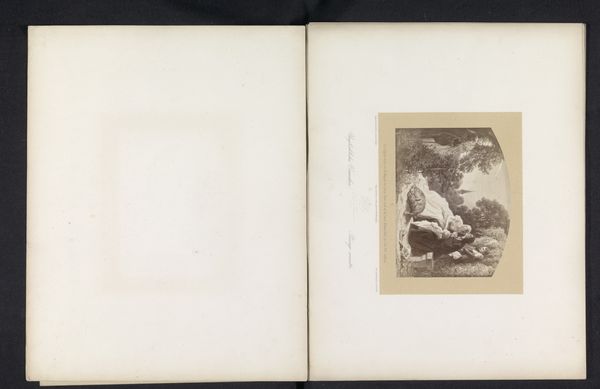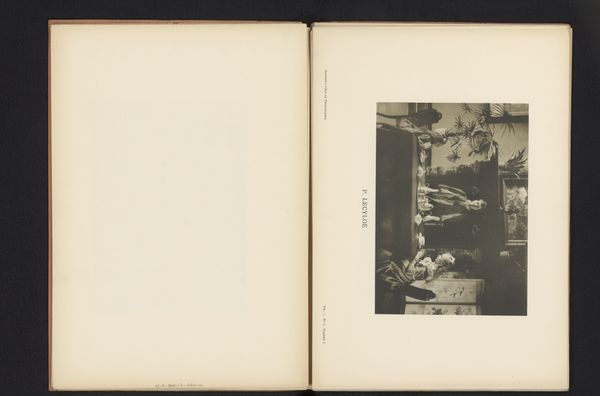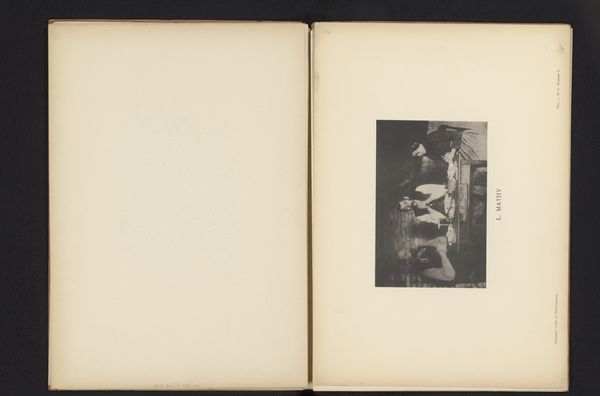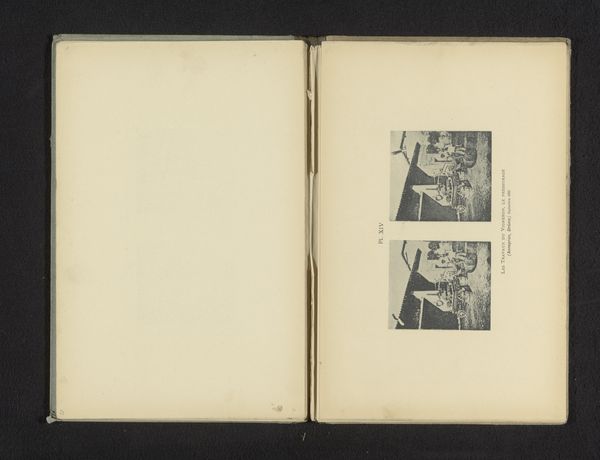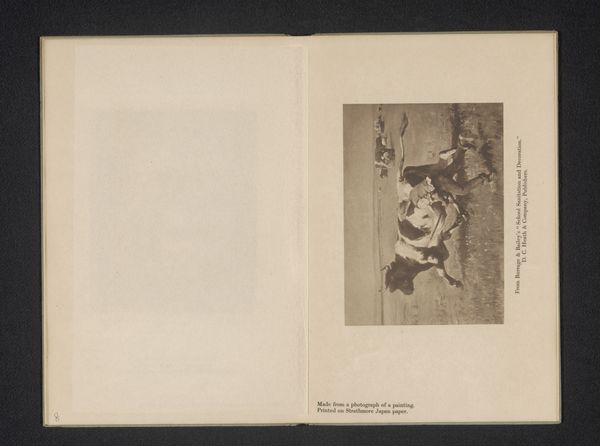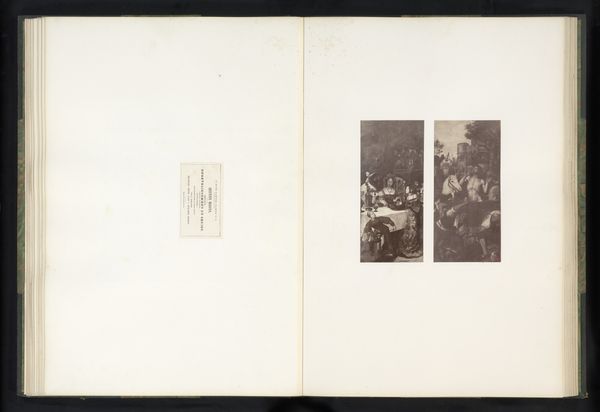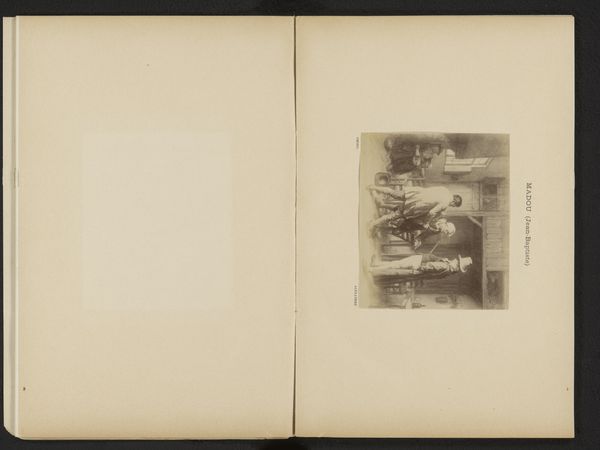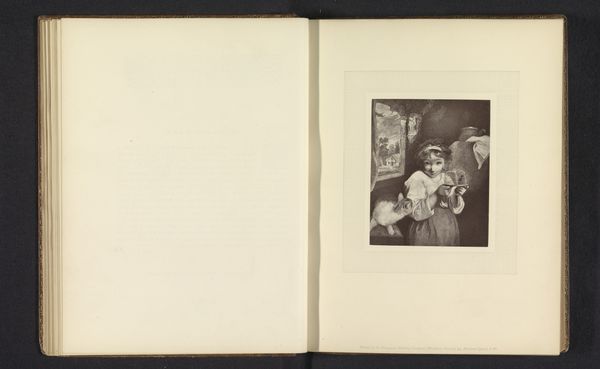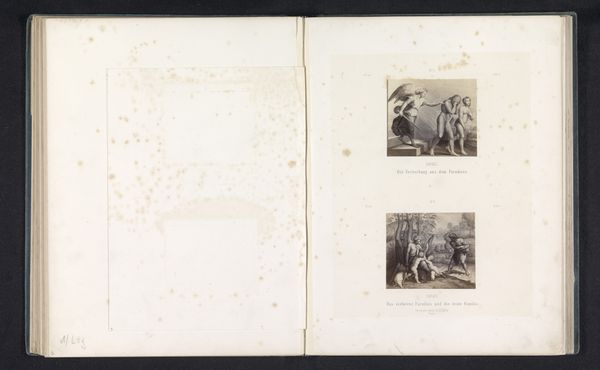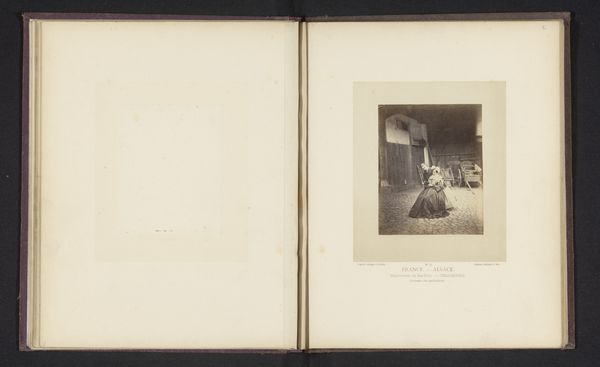
Fotoreproducties van prenten naar fresco's met voorstellingen van Isaak die Jacob zegent en Esau die vraagt om zegening door Rafaël voor de loggia's in het Vaticaan before 1861
0:00
0:00
print, etching, fresco, photography, collotype, engraving
# print
#
etching
#
fresco
#
photography
#
collotype
#
genre-painting
#
history-painting
#
italian-renaissance
#
engraving
#
watercolor
Dimensions: height 325 mm, width 250 mm
Copyright: Rijks Museum: Open Domain
Curator: These collotype prints, dating from before 1861 by Gustav Schauer, document reproductions of frescoes by Raphael in the Vatican Loggia. The prints show scenes of Isaac blessing Jacob and Esau pleading for a blessing. Editor: They have such a stark, documentary feel. You get the sense of distance, not just chronologically but also from the artistic process. Collotype, with its emphasis on photographic transfer, flattens the fresco's textures and the print's lines to render a softened document. Curator: Precisely. Yet, this mode of reproduction was innovative and widespread, spreading Renaissance imagery. We see Jacob's deception enacted while Esau's heartbreak plays out underneath. Jacob, cloaked and favored, represents divine election. Editor: The very act of re-producing images changes the original intent, though, doesn't it? This wasn’t just about art; it's about distribution and control of visual culture. To take grand narratives of religion or myth, originally embedded into architecture, and reduce them to printed form implies wider viewership through new economic channels. Curator: True, however, these scenes touch on such powerful motifs that their psychological weight translates regardless of the medium: fraternal rivalry, a father's favoritism… Esau's pleading gestures evoke millennia of artistic renderings of despair and rejection. This image reminds us of our continuous fascination with representations of human emotion. Editor: The act of mass reproduction creates another story as well. Think of the labor behind printing each one. What does it tell us that photography, engraving, and collotype, are put to the service of preserving established artwork? How did it challenge the boundaries between artist and technician, high art and industrial practice? Curator: I see them as nodes in a network of visual language, all echoing back to deeper wellsprings of human stories. Editor: And a distribution of the story… Curator: Definitely a democratizing gesture, made with material. Thank you for opening up our perspective of these works! Editor: The story behind making copies are compelling stories too. Thanks for expanding upon them.
Comments
No comments
Be the first to comment and join the conversation on the ultimate creative platform.


